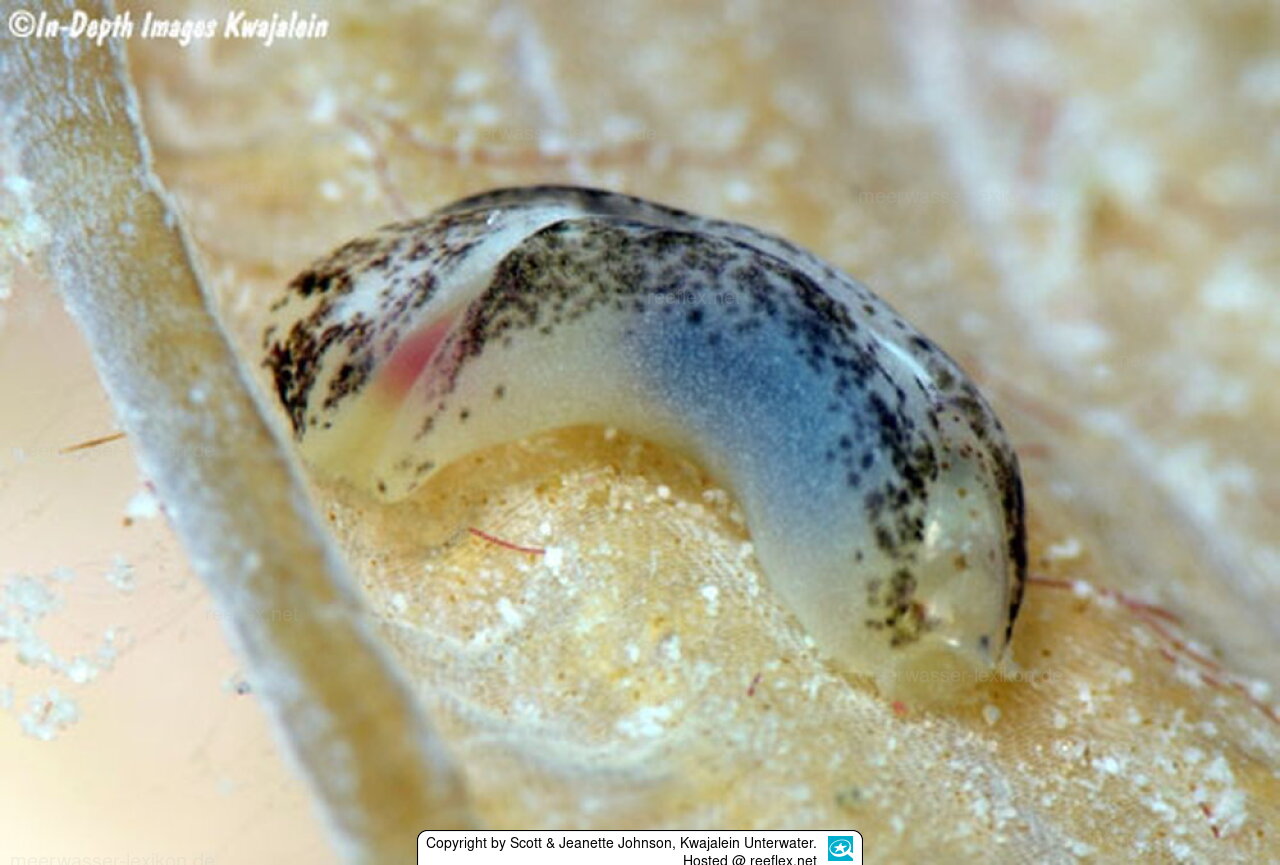Info
$alt Risbec, 1928
Phanerophthalmus perpallidus has a translucent shell with a greatly expanded aperture and low spire. Although the shell is external, it's only about one fourth the length of the body and is partially covered by the parapodia. The animal is translucent cream. When young, it has scattered brown spots on the body with orange spots showing through the shell.
It lays a lozenge-shaped, white egg mass.
Phanerophthalmus perpallidus has a translucent shell with a greatly expanded aperture and low spire. Although the shell is external, it's only about one fourth the length of the body and is partially covered by the parapodia. The animal is translucent cream. When young, it has scattered brown spots on the body with orange spots showing through the shell.
It lays a lozenge-shaped, white egg mass.







 Scott & Jeanette Johnson, Kwajalein Unterwater
Scott & Jeanette Johnson, Kwajalein Unterwater





